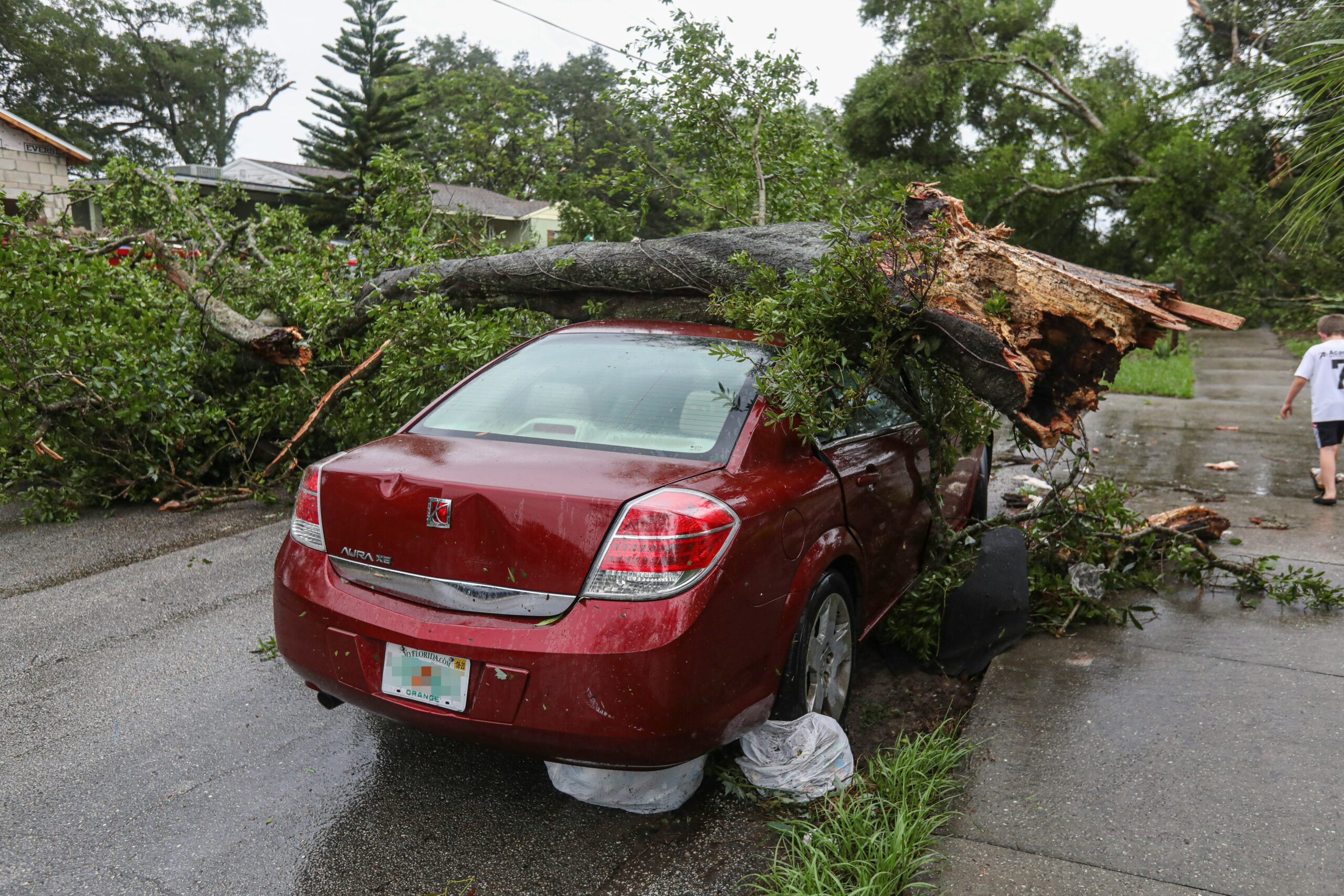Car insurance for high-risk drivers is expensive, costing an average of 90% more than a standard car insurance policy. Inexperienced drivers, drivers with poor credit, and drivers with serious violations like DUIs will pay the most for car insurance, and in some cases, high-risk drivers may find it difficult to find coverage.
The cheapest car insurance companies for high-risk drivers
To find the cheapest auto insurance rates for high-risk drivers, the experts at Jerry analyzed thousands of real car insurance policies, focusing on the two areas that impact rates most—violations and experience behind the wheel.
They found the cheapest providers of high-risk car insurance tended to be smaller, non-standard insurance companies, though some big-name providers offer great high-risk options, too:
| Provider | Cost for standard drivers | Cost with violations | Cost for young drivers (<25) |
|---|---|---|---|
| Founders | $126 | $146 | $265 |
| Clearcover | $112 | $153 | $191 |
| Safeco | $146 | $173 | $286 |
| National General | $152 | $178 | $381 |
| Progressive | $144 | $185 | $291 |
| Gainsco | $146 | $202 | $380 |
| AAA | $192 | $215 | $354 |
| Allstate | $175 | $270 | $354 |
| Bristol West | $287 | $315 | $562 |
The best car insurance for high-risk drivers meets state minimum insurance requirements and offers specialty coverage options, add-ons, and services like:
- SR-22 and FR-44 insurance filings
- Accident forgiveness to prevent a small mistake from messing up a clean driving streak
- Telematics programs to help you improve your driving history
- Vanishing deductibles to motivate you to drive safer
Never attempt to hide a high-risk factor like a car accident or violation from your insurance company. The possible consequences include policy cancelation, claims denial, increased auto insurance rates, and criminal charges. Always provide accurate information when requesting auto insurance quotes or submitting a claim.
High-risk drivers pay more for car insurance
Car insurance companies classify customers as high-risk drivers based on their chances of getting into a car accident, filing an insurance claim, or causing bodily injuries or property damages. Since auto insurance providers hate paying bills as much as the rest of us, high-risk drivers pay more for insurance coverage.
Jerry’s experts analyzed thousands of car insurance policies to determine which types of violations lead to the biggest increase in premium costs. They found that on average, drivers under the age of 18, drivers with serious violations, and drivers with poor credit pay the most for car insurance.
In fact, teen drivers pay nearly 300% more than the average standard policy, which costs around $121 a month.
| Category | Average cost | Percentage increase | Why do they pay more? |
|---|---|---|---|
| Drivers with a past car insurance lapse | $154 | 27% | To auto insurance providers, a car insurance lapse indicates everything from missed bills to driving without car insurance. |
| Drivers with an at-fault accident | $155 | 28% | If you’ve been found at fault for an accident, insurance providers will consider you to be more likely to file claims in the future, and your rates will go up as a result. |
| Senior drivers (65+) | $160 | 32% | Although they practice safer driving habits overall, older drivers over 70 have sensory impairments and are more likely to suffer injuries or death in a car crash. |
| Drivers with a speeding ticket | $252 | 107% | Speeding is a factor in 26% of all traffic fatalities.1 Drivers who receive a speeding ticket are twice as likely as non-ticketed drivers to speed again.2 |
| Drivers convicted of an OWI, DWI, or DUI | $272 | 72% | Alcohol-impaired driving accounts for 29% of all motor vehicle-related crash deaths in the USA, making Driving Under the Influence, Driving While Intoxicated, or Operating While Intoxicated a serious crime.3 |
| Drivers with bad credit scores (600 or less) | $222 | 83% | Providers use credit scores to set car insurance rates in all but 10 states, resulting in a 44-115% price penalty for policyholders with poor credit ratings.4 |
| Teen drivers under the age of 18 | $478 | 295% | Inexperienced young drivers under the age of 18 are more likely to engage in risky driving behaviors, resulting in a fatal crash rate three times higher than the general population. |
Shop smart and look for discounts
To combat the high costs of high-risk car insurance, try comparing multiple insurance providers with an app like Jerry before you buy a policy.
Once you’ve got the perfect provider in mind, you can cut costs even further by hunting for car insurance discounts and money-saving opportunities, such as:
- Building up your credit history
- Bundling your auto and homeowner’s insurance
- Enrolling in a driver education program
- Signing up for telematics insurance
- Switching to a non-owner car insurance policy
- Taking a defensive driving course
What to do if you can’t get approved for coverage
Insurers have the right to deny coverage if they feel a driver exceeds their tolerance for risk.
Insurance companies have the legal right to deny or cancel coverage to:
- Applicants under the age of 25
- Applicants with a low credit score (except in California, Michigan, and Hawaii)
- Applicants with a car insurance history lapse, or no history at all
- Applicants with no permanent or fixed address
- Drivers living in a ZIP code with high crime rates
- Drivers with a verified health condition that poses driving risks
- Motorists with a suspended or invalid driver’s license
- Owners of high-performance or collector vehicles
- Serious or repeat traffic violation offenders
However, federal laws prohibit insurance companies from denying coverage based on an applicant’s age, gender, sexual orientation, race, national origin, religion, or marital status. If you feel a provider has unfairly denied you coverage, file a complaint with your state’s department of insurance.
But that doesn’t mean you’re out of options. Many states offer state-sponsored car insurance (also known as “assigned risk pool insurance”) to high-risk drivers who can’t find coverage elsewhere. Assigned-risk coverage is no cheaper than high-risk car insurance—in some cases, it might even be more expensive.
The Automobile Insurance Plan Service Office (AIPSO) manages last-resort insurance plans for 39 states. Or you can check out one of the organizations below:
- Florida Automobile Joint Underwriting Association (FAJUA)
- Hawaii Joint Underwriting Plan (HJUP)
- Kansas Automobile Insurance Plan (KAIP)
- Kentucky Automobile Insurance Plan (KAIP)
- Maryland Automobile Insurance Fund (MAIF)
- Massachusetts Automobile Insurance Plan (MAIP)
- North Carolina Reinsurance Facility (NCRF)
- North Dakota Automobile Insurance Plan (NDAIP)
- Ohio Automobile Insurance Plan (OAIP)
- Texas Automobile Insurance Plan Association (TAIPA)
- Wisconsin Automobile Insurance Plan (WAIP)
FAQ
-
What’s the average cost of high-risk car insurance?
-
How long are you considered a high-risk driver?
-
Who’s considered a high-risk driver?
-
What’s the best car insurance for high-risk drivers?
Sources
- https://crashstats.nhtsa.dot.gov/Api/Public/ViewPublication/812932 ↩︎
- https://pubmed.ncbi.nlm.nih.gov/17366333/ ↩︎
- https://injuryprevention.bmj.com/content/28/3/211.long ↩︎
- https://consumerfed.org/wp-content/uploads/2023/07/Official-CFA-Credit-Score_2023-FINAL-REPORT.pdf ↩︎

Jasmine Kanter is a non-fiction writer specializing in comprehensive content that\\\\\\\’s accessible to beginners, experts, and everyone in between. Since joining the Jerry team, Jasmine has penned over 300 articles on car insurance requirements, driving tips, and car maintenance. Prior to joining Jerry, Jasmine worked as a graphic designer, storyboard artist, and French customer service representative. She enjoys collecting hobbies and babysitting ducks in her spare time.

Expert insurance writer and editor Amy Bobinger specializes in car repair, car maintenance, and car insurance. Amy is passionate about creating content that helps consumers navigate challenges related to car ownership and achieve financial success in areas relating to cars. Amy has over 10 years of writing and editing experience. After several years as a freelance writer, Amy spent four years as an editing fellow at WikiHow, where she co-authored over 600 articles on topics including car maintenance and home ownership. Since joining Jerry’s editorial team in 2022, Amy has edited over 2,500 articles on car insurance, state driving laws, and car repair and maintenance.







